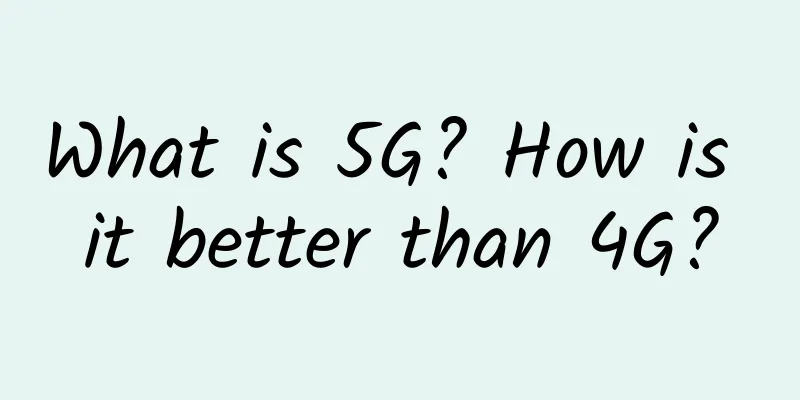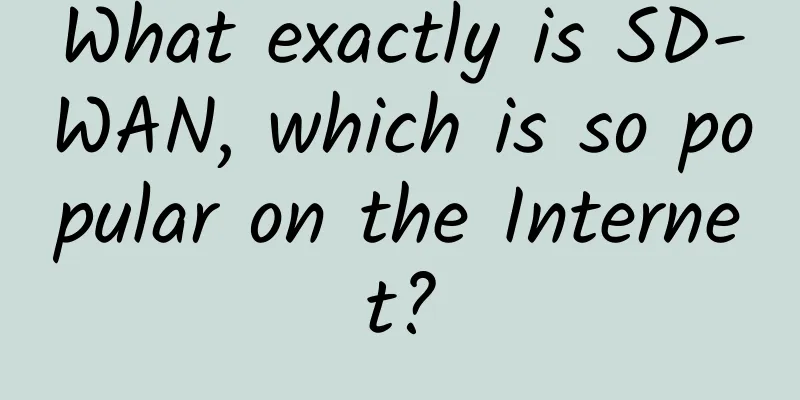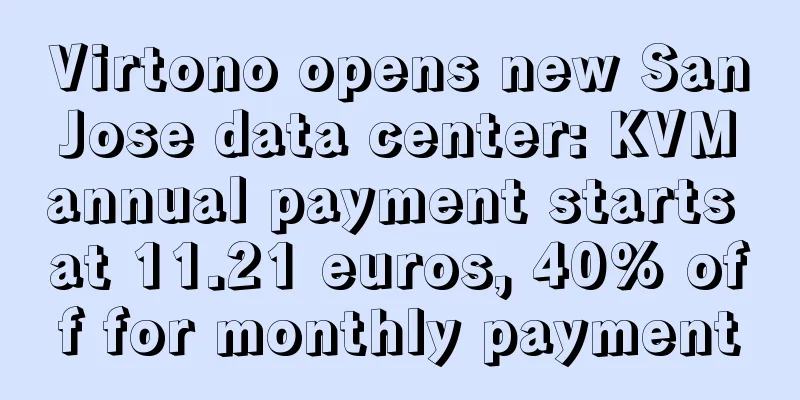Someone finally explains the true value of 5G

|
Since 2019, the pace of 5G commercialization has been accelerating. All over the world, people are busy auctioning 5G spectrum licenses and signing 5G contracts. However, at the same time, the debate about 5G has not only not subsided, but has intensified. Supporters of 5G believe that it is an unprecedented technological revolution and that various network indicators have been greatly improved. Large-scale construction should be started as soon as possible to seize the opportunity. Opponents believe that 5G has not yet found a suitable application scenario, people’s demand for 5G is not as strong as imagined, and it is not appropriate to invest a large amount of money immediately. Frankly speaking, I personally tend to support the latter. Although everyone has been looking forward to 5G, and the sluggish industry is in urgent need of 5G investment to stimulate growth, when it comes to 5G construction, we should remain calm and rational. As the saying goes, "Don't release the eagle until you see the rabbit." It is true that we have not found the demand to trigger 5G. If we blindly start large-scale network construction, we may face the embarrassing situation of "network has no one to use" and "popular but not popular", and we may also be burdened with heavy operating burdens or even huge debts. Didn’t Huawei’s CEO Ren Zhengfei also say that “the role of 5G has actually been exaggerated” and “in fact, human society does not have such an urgent need for 5G now.” However, not building on a large scale and not building at all are two different things. It is still necessary to conduct pilot projects on a wide scale. Otherwise, without soil, it will be more difficult to incubate the "demand" we expect. In the final analysis, where is the “demand”? Who will use 5G? What is the value of 5G? Internet of Vehicles 5G is unique. Before 5G, from 1G to 4G, all existed for the purpose of serving the communication between "people". 5G, on the other hand, is mainly for serving the communication needs between "things and things" and "people and things". In other words, for the first time, humans have elevated the "Internet of Things" to the same level as the "Internet of People", or even a higher level than the "Internet of People". This means that human beings’ understanding of communication has undergone a fundamental change. The purpose of communication has changed, and the technology and architecture of communication have also changed accordingly. Although the Internet of Things has a long history, it is the cellular communication technology (using base stations to achieve wireless communication) that truly announced the official start of its golden age.
Let’s take the Internet of Vehicles, the most typical scenario in the Internet of Things, for analysis. The Internet of Vehicles is a typical scenario because it places extremely high demands on the communication network. Large bandwidth, extremely low latency, a large number of connections, and tight coverage are all essential conditions for realizing the Internet of Vehicles. Our current technologies, including LTE-V, NB-IoT, LoRa, etc., cannot perfectly meet these requirements. Only 5G can truly achieve this. Therefore, among many application scenarios, the Internet of Vehicles is considered to be the most likely place for the 5G detonation point to appear. The Internet of Vehicles scenario is also called the "first scenario of 5G." In Xiaozaojun's opinion, the value of the Internet of Vehicles is not to provide audio and video entertainment, not to improve driving comfort, and not to monitor various parameters of the vehicle. These are not the real pain points. What are the real pain points? I think that the essence of a car is a means of transportation. The problem with cars is the problem with transportation. There are only two core pain points in transportation: one is the congestion of traffic within the city, and the other is the high cost and low efficiency of inter-city transportation. In 2018, Xiaozaojun has been paying attention to the development trend of the Internet of Vehicles. Among them, one piece of news caught my attention - at Alibaba's Yunqi Conference, they proposed to build a fully enclosed driverless highway specifically for the application of the Internet of Vehicles. This gave me a lot of inspiration. Yes, many companies have been emphasizing driverless cars all along, believing that the purpose of developing the Internet of Vehicles is to enable everyone to sit in driverless cars and drive on the road in the future. However, let me ask you, given China's road conditions (road complexity and drivers' driving habits), if there are both manned and unmanned cars on the road, would you dare to sit in an unmanned car? Would you dare to drive a car if you were asked to do so? Anyway, I don’t dare. I think it would be safer if all the roads were filled with driverless cars. I think it would be the most unsafe if there were a mixture of them. The reality is that it is impossible for us to replace all the manned vehicles on the road with driverless vehicles at the same time. Therefore, I think that creating a local fully unmanned driving environment is a very feasible solution. For example, as Alibaba just said, the entire highway will be closed and all of it will be driverless cars. Or, a factory or scenic spot will be full of driverless cars (shuttle buses). For example, from Shanghai to Beijing, the logistics transportation volume is very large. If a fully enclosed highway is built and only driverless cars are allowed to drive on it, the speed of the vehicles will be relatively stable, which is conducive to reducing energy consumption. In addition, multiple vehicles can be used to tow the vehicle to further reduce energy consumption. Because there is no driver, the personnel cost is reduced, and there is no problem of fatigue driving and traffic violations. In the early days, this type of highway will only transport goods, which is very helpful in reducing logistics costs. When the time is right, it will transport passengers. In other words, long-distance passenger transportation will be handled by high-speed rail, which is more comfortable and safer. (In fact, conventional railways can play a greater role, but unfortunately the management level and service awareness are not enough, and the cost cannot be reduced. This is a digression.) I believe that the above method can effectively solve the pain points of inter-city transportation. Let’s look at the traffic congestion within the city. Similarly, regarding this pain point, it was still Alibaba’s solution that impressed me. When listening to a speech by Alibaba CTO Dr. Wang Jian, he mentioned, what is the first thing to do to solve urban traffic congestion? It is to count how many cars there are in the city. Only by figuring out how many cars there are can we further analyze the flow of cars and then control and guide them. To put it simply, we first obtain data, then analyze the data, and finally apply the data. For example, a large number of cameras are deployed at various intersections in the city. Then, through video recognition technology, license plate numbers and vehicle flow information are captured in real time. The back-end (cloud) collects massive amounts of data to obtain the location and route of every vehicle in the city. By further analyzing and studying these driving data and understanding the patterns of vehicle flow, we will know how many vehicles drive from the east to the west of the city and from Xinjiekou to Confucius Temple every day. Once this information is obtained, the system (such as Alibaba's City Brain) will control traffic lights, dynamically adjust signal waiting times, and improve traffic efficiency at intersections. Even some two-way lanes can be set up. For example, a road that originally had four lanes in both directions can be temporarily changed to one lane for going and three lanes for returning to ease congestion. What do you think? Is it feasible? It is equivalent to opening up the "Ren and Du meridians" of the city. In addition to alleviating driving problems, there is also the parking problem. By collecting parking lot data, traffic can be diverted in a timely manner. For example, during the Spring Festival Lantern Festival, if there are no parking spaces in the surrounding three-kilometer parking lot, the public can be notified in a timely manner to avoid driving there or be directed to other parking lots. I think that both the fully enclosed driverless highway and the city brain are truly feasible development directions for the Internet of Vehicles. To be honest, Alibaba is very pragmatic in proposing these solutions, which is much better than some CEOs putting on a show. So, what role does 5G play in these two solutions? In the first plan, the realization of fully autonomous driving of vehicles is definitely inseparable from the support of 5G network. This highway will definitely be fully covered by 5G, which will dynamically collect vehicle speed information and issue driving instructions. At the same time, it will timely collect weather information and abnormal road conditions (such as animals breaking in, cargo falling, and falling rocks rolling in) and transmit them to vehicles for avoidance. The second solution is that although the vehicle does not seem to be equipped with 5G vehicle communication equipment in the previous description, the 5G communication capability is given to the camera. The premise of the city brain is the video data collection equipment such as the camera. If there is no camera, or the camera data cannot be transmitted back to the city brain, then no matter how powerful the city brain is, it is useless and blind. In addition, there is another very important factor in the second solution, which is AI (artificial intelligence). Obviously, the data analysis work mentioned above cannot be completed by humans, but by algorithms. To put it bluntly, it relies on deep learning and artificial intelligence. Here is another piece of information for everyone. Huawei has installed cameras with AI chips at 9 intersections in Shenzhen to analyze the waiting data of vehicles at the intersections in real time, and then adjust the duration of the traffic lights. According to my understanding (not necessarily correct), this is the "intersection brain". A single AI chip and algorithm cannot support data computing for the entire city, so it will first support data computing for one intersection. This brings up a very important development direction of 5G, which is the deep integration with AI, cloud computing and big data. AI is artificial intelligence, deep learning. The object of learning is massive data. Where does this massive data come from? From the Internet of Things. The large bandwidth and massive data connection provided by 5G obviously meet the needs of data transmission. In short, 5G provides strong support for AI, and 5G and AI jointly empower industry applications. Industrial Internet of Things After talking about the Internet of Vehicles, let’s take a look at the Industrial Internet of Things. The industry has high expectations for the application of 5G in the industrial Internet of Things. South Korea was the first country in the world to commercialize 5G in the industrial field. In everyone's opinion, when mentioning 5G industrial Internet of Things, people will think of robots or robotic arms, and the scenario of remote control through 5G. In fact, in my opinion, the showmanship of that scene is far greater than its practical significance. In the field of industrial applications, the demand for ultra-low latency is not that urgent. Most robotic arms are still automated rather than remote, let alone real-time remote.
More industrial Internet of Things demands are still focused on data collection and data distribution. In fact, 5G is not needed to meet these needs. The existing NB-IoT may be enough. In fact, enterprises have a more urgent need for LoRa. LoRa is easier to implement because it is controlled by the enterprise itself, with lower costs and higher security for the enterprise itself. (Operators have been pushing NB-IoT for years, but with little success.) Just like the analysis of the Internet of Vehicles just now, when looking at the Industrial Internet of Things, we also need to analyze its pain points and urgent needs. The fundamental purpose of business operation is to make a profit. For industrial enterprises, if they want to make a profit, they must improve production efficiency and reduce production costs. Although using robots to replace workers can reduce costs and improve efficiency, it does not solve the core problem for enterprises. In the entire industrial manufacturing process in the future, what determines the overall efficiency of the enterprise is not the manufacturing capability of the robot, but the control capability of the entire manufacturing, transportation, storage and sales process. In other words, in addition to manufacturing, it is also necessary to strengthen the control of the supply chain, inventory and all production factors. Let me give you an example to illustrate this. In the future, if users want to buy a car, they will no longer be satisfied with the specified configuration provided by the 4S store, but will customize the configuration themselves. Users can choose the engine with the right horsepower, the appearance, seats, interior, and tires suitable for local road conditions. When the customization is completed, the car company will mobilize the parts at the fastest speed, schedule production, and then deliver it to the user. In this case, automakers must pay attention to supply chain data (parts inventory), production progress, and inventory control (minimizing inventory or even eliminating inventory). Whoever does well will make a profit and survive. If you want to do well, you can’t do without the Industrial Internet of Things. The Industrial Internet of Things, including 5G, has become a powerful tool for enterprises to manage production factors, and it has also become a part of the production factors. The profits of enterprises will be mined from data, and the Industrial Internet of Things and 5G provide support for enterprises to obtain data. In addition to the manufacturing data of the production line, user-side demand data, usage habit data, etc. will also affect the company's market expansion and marketing promotion. In addition to the Industrial Internet of Things, the same principle also applies to smart agriculture, smart cities, etc. 5G supports data, and data drives value. The rise of social video Finally, let’s talk about the “Internet of People”. Although the main application scenario of 5G is for the Internet of Things, it is not completely unusable for humans. The scenario of eMBB (enhanced mobile broadband) has increased the network speed by more than 10 times compared with 4G, which is still very attractive for human networking. In my personal opinion, if 5G will create some unicorn companies in the general consumer field, they will definitely be concentrated in the video field, and most likely in the video social field. Only video can digest the huge bandwidth brought by 5G. Only video can bring users the most extreme sensory experience.
VR/AR is also a special form of video. Although VR/AR is still an optional entertainment application, it is hard to say whether it will suddenly explode and become a hit application in the future. Game, Girl, and Gamble are the three major driving forces behind the rise of the Internet and the important inducements for the booming development of 3G/4G. If 5G wants to develop, it may be inseparable from them. Whether it is an Internet company or a traditional company, they can dig deep and think about the points of convergence between themselves and 5G to see if they can find business opportunities. Conclusion In short, 5G is an empowerment. As a technology, it itself is not worthy of public attention. What should really be paid attention to is the capabilities it provides and its ability to connect with data. What exactly can these capabilities bring to you? Is it an improvement in user experience? Or a solution to user pain points? Or is it a reduction in costs and an increase in efficiency? All of these require careful consideration. The current economic development has entered a new stage, and the competition will become increasingly fierce. If we can seize this precious empowerment opportunity of 5G, it will be helpful to seize the initiative in the competition and survive better. If you miss this opportunity, it will be very difficult to get it back. |
<<: The curtain is about to be raised on 5G commercial use, will the industry be reshuffled?
>>: From TCP to Socket, a thorough understanding of network programming
Recommend
5G is not yet popular, but 6G patents are already the world's first, and the 6G war has already begun
5G has been promoted for a long time, but it has ...
Operating system: Introduction to SSH protocol knowledge
Today I will share with you the knowledge related...
Tong Yongyue of Yunfan Accelerator: Deconstructing CDN and Returning to the Original Intention
The 2017 Asia-Pacific CDN Summit was held in Beij...
Gouyun 618 promotion: 30% off on Elastic Cloud, 20% off on Classic Cloud, Hong Kong dedicated server from 300 yuan/month, recharge 618 yuan and get 68 yuan
DogYun is a Chinese hosting company founded in 20...
Security teams’ need for flow data drives NetSecOps collaboration
You’ve probably heard about the fact that network...
Behind the popularity of blockchain concept, the real value lies here
In the era of Internet big data, people come into...
Comment: Who is the first 5G city?
In order to further unleash the role of new infra...
ExtraVM: $5.5/month KVM-1GB/12G NVMe/1TB/Japan Data Center
ExtraVM is a foreign hosting company founded in 2...
Omdia Viewpoint: CNF is key for telecom operators to realize the promise of 5G
Telecom operators are investing in operator softw...
[Python Flask Practice] Get HTTP request data
[[389990]] When the client accesses the server pr...
SaltyfishTech: San Jose/Germany CN2 GIA/AS9929 line VPS quarterly payment starts from $19.5
SaltyfishTech, Saltyfish Cloud, is a Chinese host...
How to choose the best flash storage for your data center?
The all-flash data center is a futuristic concept...
Where does the power of high-performance 5G core network come from?
The core network is the brain of the entire commu...
ExtraVM: $2.75/month-1GB/15G NVMe/1Gbps unlimited traffic/Los Angeles data center
ExtraVM is offering a promotion for VPS hosts in ...
Hyperscale Data Centers vs Micro Data Centers
Some say the data center of the future is very di...









